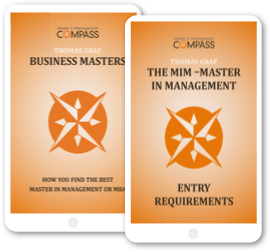You need to be sure of the requirements BEFORE you apply for a Management program. Language skills are a must, and language tests such as the TOEFL are always required for non-native speakers. Some schools, however, are more selective than others, and that's where the GMAT comes into play. Mastering the GMAT is required by most business schools for MBA programs and by SOME for Master in Management programs. Make sure in advance if you need it or not (Manchester Business School and Ashridge Business School for example do not require the GMAT for a Master in Management programs).
What is the GMAT?
The GMAT is the Graduate Management Admission Test and creates a real challenge for many applicants. This standardized test is used by Business Schools worldwide to measure the suitability of the applicants for business-management degree courses, mostly postgraduate studies. Every year more than 100.000 people master the GMATand have more or less difficulties with it.
Stress Tolerance is necessary to master the GMAT
The GMAT is not only a test for language skills, it is also supposed to test the analytical-logical abilities of the examinee. Therefore it is split into three parts: Essays, quantitative part, verbal part. These three parts always appear in the test in this order. The difficulty hereby especially is enormous time pressure. Many of the GMAT questions could be easily answered correctly if you had enough time to calculate the answer for example – but you don’t have it and that’s what accounts if you want to master the GMAT.
Part: Essays (Analytic Writing Assessment)
The GMAT requires two essays with 30 minutes time for each and you get a score from 0 to 6 points for both essays together. This score, however, does not flow into the final GMAT-score and will be mentioned separately in your GMAT-certificate. Although it is not as important as the "main" GMAT-score it should be taken serious nevertheless. You never know how grave admissions managers take the essays into account when deciding about your application and a high GMAT-Score such as 690 with only 2 points in the essay part may cause some irritation.
Part: Integrated reasoning: 12 questions, 30 minutes:
Multi-Source Reasoning
Graphics Interpretation
Two-Part Analysis
Table Analysis
Part: Quantitative Section
This part challenges your quantitative skills and confronts you with 37 questions. You have 75 minutes time for solving them and the questions consist of two types:
(a) Data Sufficiency: Here you get a problem, for example: Is 5x less than 1,000? Then you get two equations, for instance (1) 5x+1 > 3000 and (2) 5x-1 = 5x - 500. Then you have to decide if (1) is sufficient to solve the problem, or (2), or both together, or (1) or (2) by themselves or if neither (1), (2), or (1) and (2) together are sufficient.
(b) Problem Solving: Find the answer that is the solution to the mentioned problem. Example: What percentage of 256 is 32 ? Possible answers: 8%, 0.125%, 12.5%, 12.8%, 128%
Part: Verbal section
In this part, your language skills are tested, however, on a much higher level than by the TOEFL. The difficulty lies in the fact that any answer is correct. Your task, however, is finding out the "best" answer.
(a) Sentence correction: In a brief text passage some words are underlined. Choose among the alternatives the one that fits best into the passage.
(b) Critical reasoning: You read a medium-long passage and decide which answers about the content fits best.
(c) Reading Comprehension: You read quite a long text, mostly about a scientific or sociological phenomenon, and answer questions to it.









